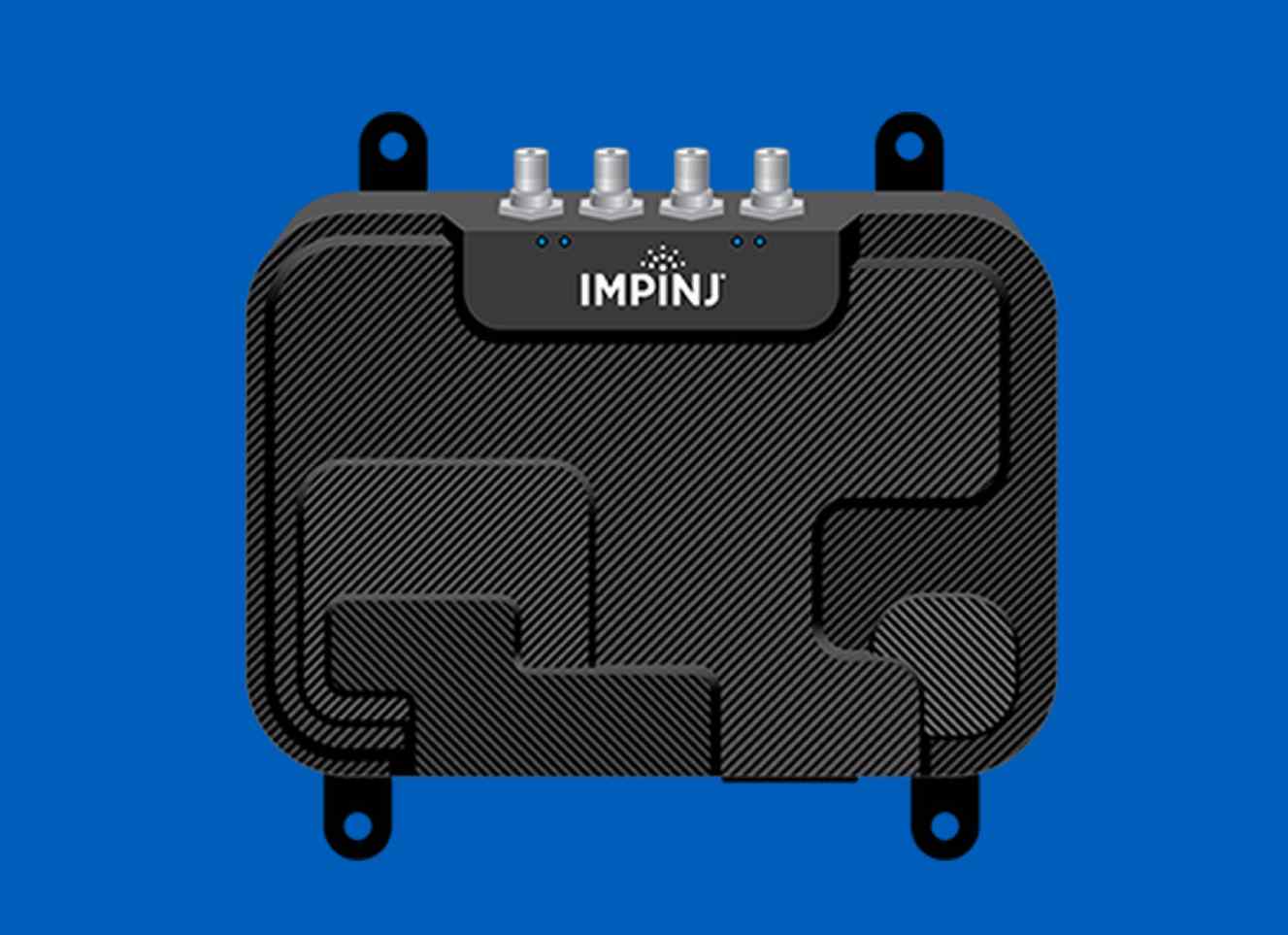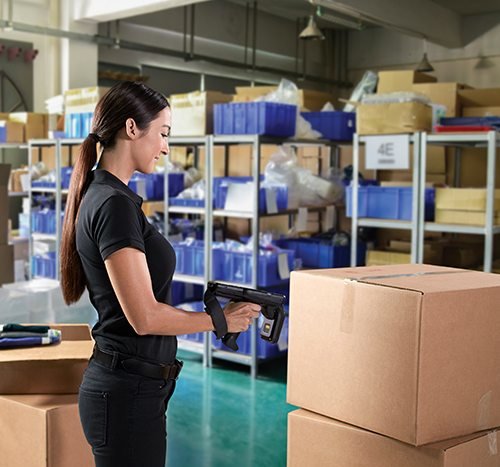
Inventory Automation with RAIN RFID

Retailers – responding to years of disruption and looking to future-proof their businesses and supply chains – are investing in technology to improve inventory accuracy and increase operational efficiency.
When barcode technology was introduced in the 1970s, it brought tremendous efficiency to retail operations. Studies have shown, however, that taking inventory with a RAIN RFID handheld reader is 25 times faster than with a barcode scanner. RAIN RFID adoption has seen significant growth, driven largely by the operational efficiencies it brings to inventory management. As the technology evolves, increases in tag performance, innovations in reader technology, and the development of new applications are driving additional value and efficiency to retail operations. Leading retailers are now looking to automate retail systems with RAIN RFID-enabled autonomous reading, with readers integrated into the retail environment to identify items at checkout stands, through doorways or other checkpoints.

What is RAIN RFID?
Extending Automation to Inventory Scanning and Management
Beyond Retail: Automating Supply Chain & Logistics
Delivering Inventory Automation with RAIN RFID
Radio Frequency Identification (RFID) is a form of wireless communication that uses radio waves to identify and find objects. RFID is a generic term that encompasses different frequencies and standards, including both NFC and RAIN. In simple terms, all RFID systems operate on the same principle: An RFID tag stores information that can be read wirelessly by an RFID reader.
RAIN RFID is a type of RFID that can identify a thousand items a second without direct line-of-sight in a range between a few centimeters to several meters. RAIN RFID tags operate indefinitely without batteries, which means RAIN RFID tags are very inexpensive. The capabilities of RAIN RFID combined with the low cost of RFID tags make it the ideal technology for very large-scale IoT systems that connect thousands, millions, or billions of things. RAIN RFID is the fastest-growing segment of the RFID market and the type of RFID that is used for retail inventory.
Though automation has made its way into many facets of the enterprise, it is relatively nascent in inventory management. Many retailers continue to rely on store associates using handheld readers to scan inventory, because with RAIN-RFID in place retailers have reported up to a 20% increase in item availability and up to 60% improved profit margin.
Results like these have led an increasing number of retailers to expand their RAIN tagging beyond apparel to include general merchandise such as home goods, electronics, sporting goods, and more. This expanded tagging can require more of associates’ time if they continue to rely on manual scanning, but it also strengthens the potential value of automation. As the growing scarcity and increasing cost of labor loom, autonomous reading solutions presents an enormous opportunity. Visionary retailers have begun deploying autonomous reading solutions to automate inventory management processes and capture value of expanded RAIN RFID tagging while allowing store associates to focus on enhancing in-store shopper experiences and improving store operations.
These retailers are deploying RAIN RFID-enabled automation solutions for self-checkout, loss prevention, fitting room analytics, omnichannel fulfillment, back-to-front of store replenishment, shipment verification, and more.
Autonomous reading is bringing benefits beyond the retail store, too. RAIN RFID has grown in the supply chain & logistics (SCL) segment where, to date, it has been primarily used to track shipments by tagging pallets and cases and installing readers in dock doors. Today, we are seeing leading SCL enterprises expand their RAIN tagging beyond pallets to smaller, higher-volume items such as parcels, packages, and post. In the SCL industry, it’s not feasible to rely on a workforce using manual handheld reading devices, whether barcode or RFID. Autonomous reading solutions are helping SCL enterprises to address growing workforce challenges, as well as optimize operational efficiency and shipping accuracy. Early SCL use cases include incoming and outgoing shipment verification, cross-dock operations, parcel conveyance and transitions, premium package tracking service offerings, reverse logistics, and so much more.
Not only does this directly yield results for SCL providers; it ultimately drives better outcomes for the retailers who rely on SCL providers to fulfill customer orders.
UPS has been vocal about its efforts to digitally transform its business. Carol Tome, UPS’s CEO, has on several occasions spoken enthusiastically in public earnings calls about RFID as a key enabler of UPS’s “Smart Package, Smart Facility” initiative. According to Ms. Tome, RFID will enable UPS to eliminate 20 million manual scans, increase package throughput, improve customer service, and help eliminate $500 million in non-operating expenses in each of the next two years.
Savvy enterprises are using the Impinj platform, which enables them to deploy RAIN-based autonomous reading solutions to gain real-time insight and management for everything they manufacture, transport, and sell, making it a critical enabler of service-oriented experiential retailing and automation that drives operational agility.
Walmart
Walmart reports that they are expanding their RAIN RFID use beyond apparel into categories including home goods, electronics, sporting goods, toys and more to improve inventory accuracy, provide a better shopping experience, and drive online and pick-up-in-store capabilities.
Fast Retailing
Fast Retailing – which owns brands such as UNIQLO, GU, Theory, Helmut Lang and others – are well advanced in their efforts to track everything they manufacture, transport from factories to warehouses, and to stores. The data insights generated by their RAIN RFID solutions are critical to improving their inventory management, production, and supply chain operations across all brands.
“RFID gives us the most complete view of our inventory that we have ever had,” said Mark Parker, executive chair and former CEO of Nike. “It’s quickly becoming the most precise tool in our arsenal to meet an individual consumer’s specific need at the exact right moment.”
Throughout our rich history, Impinj has engaged with visionary sector-leading enterprises around the globe to learn about their businesses – their challenges, unmet needs, and opportunities. Taking those learnings, we develop and deliver leading technologies that are integral in building enterprise-wide capacity to deliver innovative, convenient, and fast customer shopping experiences, even as they face continually changing external pressures.
Impinj
Impinj (NASDAQ: PI) helps businesses and people analyze, optimize, and innovate by wirelessly connecting billions of everyday things—such as apparel, automobile parts, luggage, and shipments—to the Internet. The Impinj platform uses RAIN RFID to deliver timely data about these everyday things to business and consumer applications, enabling a boundless Internet of Things.




